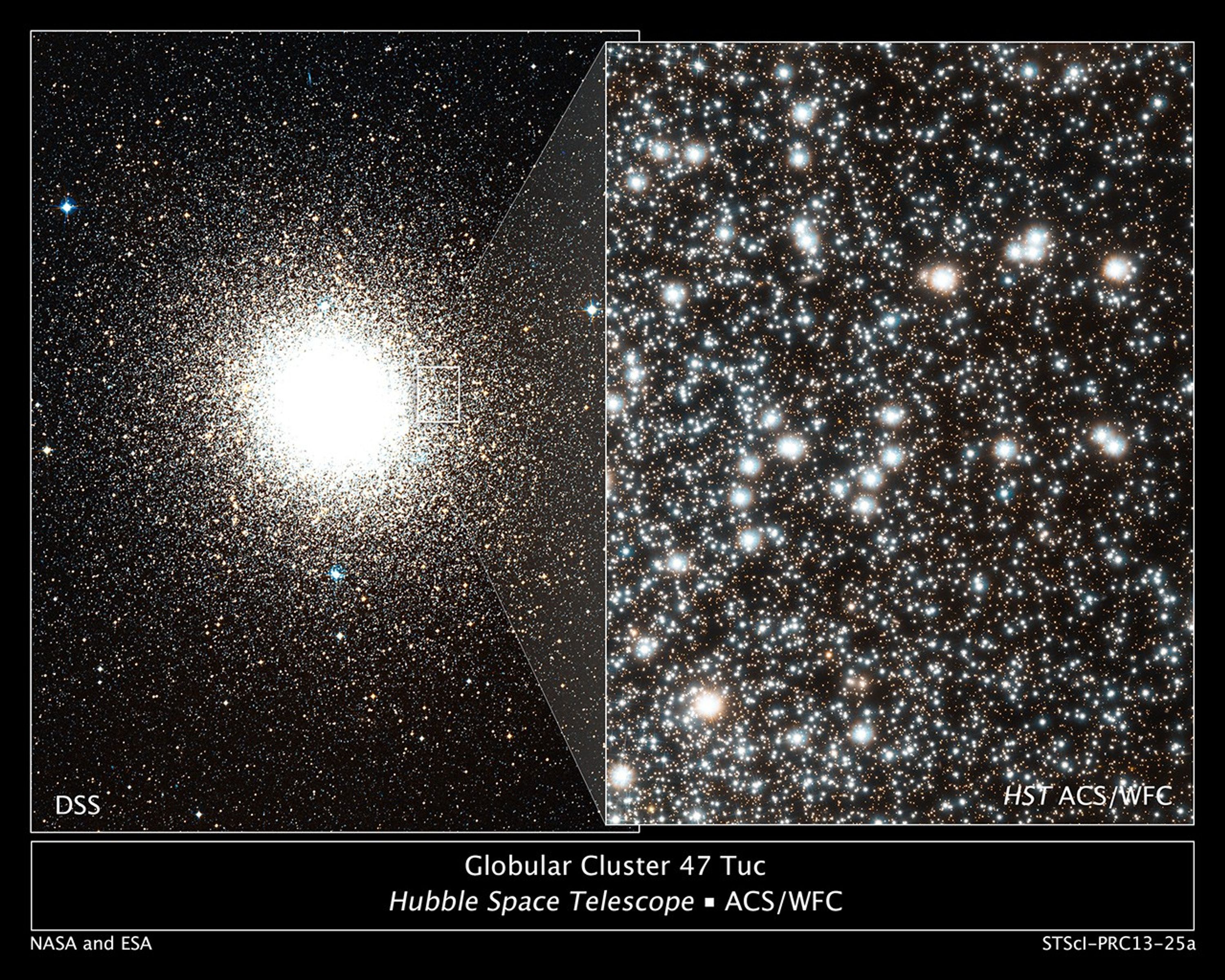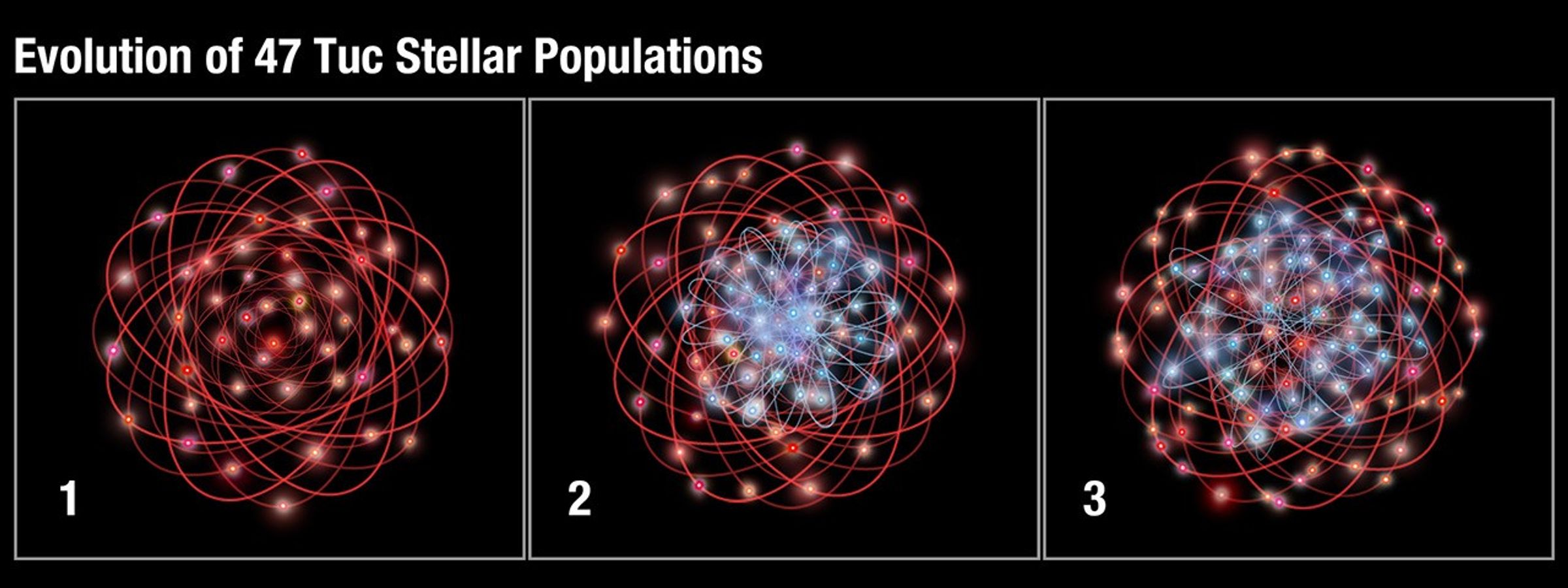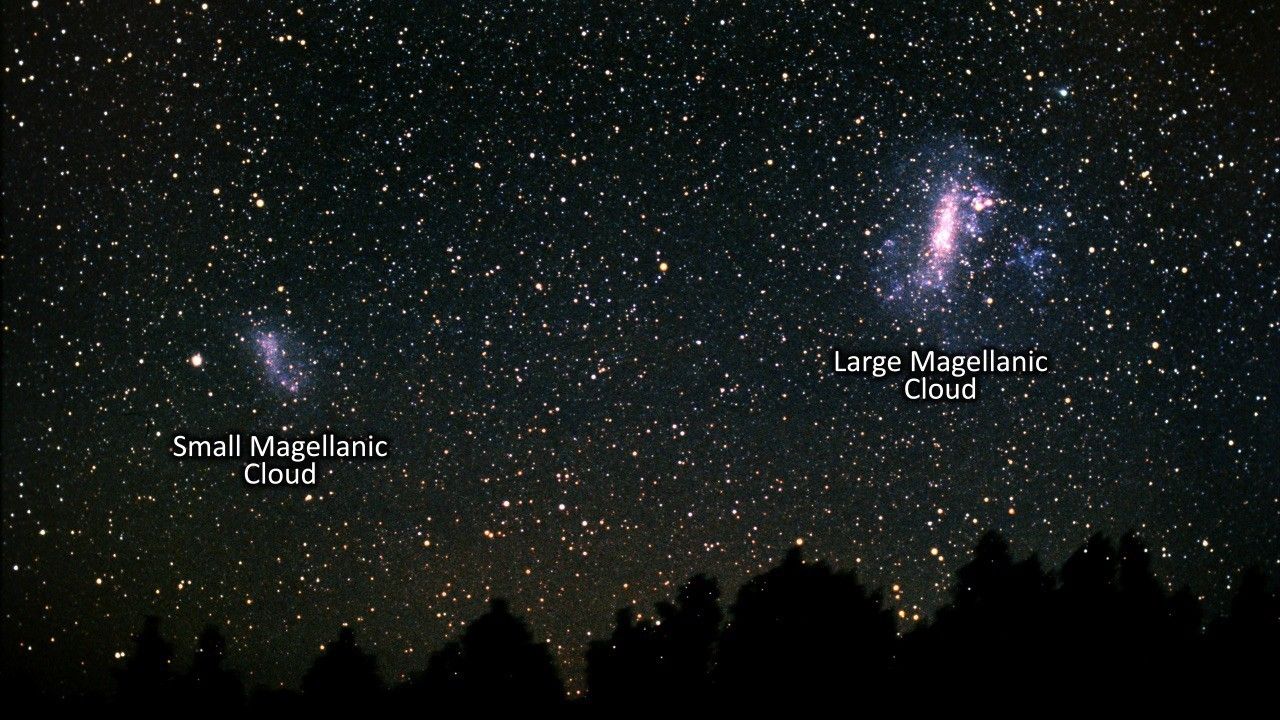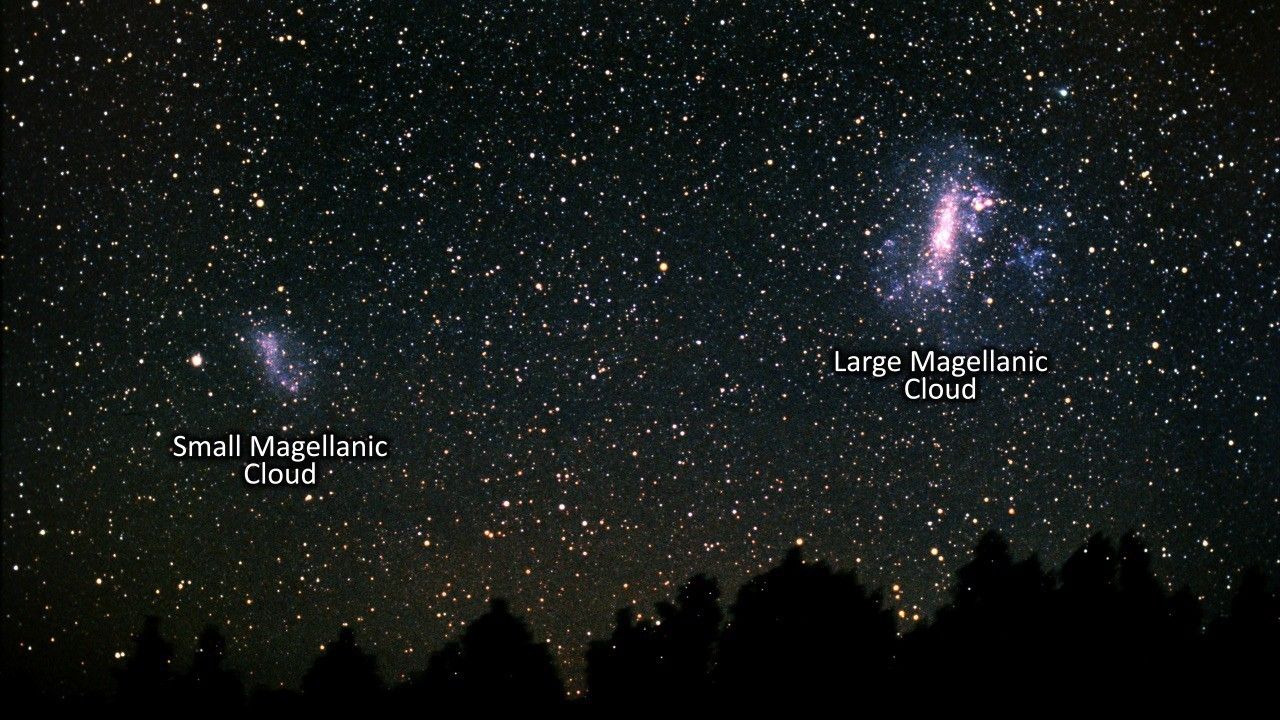1 min read
Globular Cluster 47 Tucanae

These images showcase the ancient globular cluster 47 Tucanae, a dense swarm of up to a million stars.
The image at left shows the entire cluster, which measures about 120 light-years across. Located in the southern constellation Tucana, the cluster is about 16,700 light-years away. The image is part of the Digitized Sky Survey (DSS) and was taken by the UK Schmidt Telescope at Siding Spring Observatory in New South Wales, Australia. The white rectangular box outlines the view taken by NASA's Hubble Space Telescope.
That image, shown at right, captures close-up views of thousands of cluster stars. The large, bright stars in the image are red giants. These stars have puffed up to several times their normal size because they have exhausted their nuclear fuel and are near the end of their lives. The image was taken by Hubble's Advanced Camera for Surveys.
Astronomers used these Hubble observations, along with archival Hubble data, of 47 Tucanae to accurately measure changes in positions of more than 30,000 cluster stars. Based on those measurements, the astronomers pieced together the stars' histories, finding two populations of stars that have different chemical composition and that have different motions. Understanding the dynamics of the 47 Tucanae stars can yield insights into how this cluster formed its stars.
The Hubble image was taken between January and October 2010. The Schmidt telescope image was taken Oct. 12, 1977, and Sept. 9, 1989.
About the Object
- R.A. PositionR.A. PositionRight ascension – analogous to longitude – is one component of an object's position.00h 24m 5.67s
- Dec. PositionDec. PositionDeclination – analogous to latitude – is one component of an object's position.-72° 4' 52.59"
- ConstellationConstellationOne of 88 recognized regions of the celestial sphere in which the object appears.Tucana
- DistanceDistanceThe physical distance from Earth to the astronomical object. Distances within our solar system are usually measured in Astronomical Units (AU). Distances between stars are usually measured in light-years. Interstellar distances can also be measured in parsecs.16,700 light-years (5,100 parsecs)
About the Data
- Data DescriptionData DescriptionProposal: A description of the observations, their scientific justification, and the links to the data available in the science archive.
Science Team: The astronomers who planned the observations and analyzed the data. "PI" refers to the Principal Investigator.The image was created from Hubble data from proposal 11677: H. Richer and S. Davis (University of British Columbia), M. Rich, B. Hansen, and D. Reitzel (UCLA), J. Anderson and J. Kalirai (STScI), A. Dotter (Australian National University), G. Fahlman (Dominion Astrophysical Observatory), J. Hurley (Swinburne University of Technology), I. King (University of Washington), M. Shara (American Museum of Natural History) and P. Stetson (Dominion Astrophysical Observatory). The science team includes: H. Richer and J. Heyl (University of British Columbia), and J. Anderson (STScI). - InstrumentInstrumentThe science instrument used to produce the data.DSS (left), HST>ACS/WFC (right)
- Exposure DatesExposure DatesThe date(s) that the telescope made its observations and the total exposure time.January - October, 2010 (right)
- FiltersFiltersThe camera filters that were used in the science observations.HST>ACS/WFC: F606W (V) and F814W (I)
- Object NameObject NameA name or catalog number that astronomers use to identify an astronomical object.47 Tuc, 47 Tucanae, NGC 104
- Object DescriptionObject DescriptionThe type of astronomical object.Globular Cluster
- Release DateJuly 18, 2013
- Science ReleaseHubble Shows Link Between Stars’ Ages and Their Orbits in Dense Cluster
- Credit

This image is a composite of separate exposures acquired by the ACS/WFC instrument. Several filters were used to sample various wavelengths. The color results from assigning different hues (colors) to each monochromatic (grayscale) image associated with an individual filter. In this case, the assigned colors are: Cyan: F606W (V) Orange: F814W (I)

Related Images & Videos

Evolution of 47 Tuc Stellar Populations
This illustration shows the evolution of two populations of stars in the ancient globular cluster 47 Tucanae. The first panel shows a grouping of red stars, an older population containing fewer chemical elements heavier than helium and hydrogen. These stars move in random,...

Zoom into 47 Tucanae (No Narration)
This video zooms in from a view of the southern constellation Tucana to the globular cluster 47 Tucanae, which sits 16,700 light-years away from Earth. 47 Tucanae is 10.5 billion years old and is one of the brightest of our Milky Way galaxy's more than 150 globular clusters....

Zoom into 47 Tucanae (Narrated)
This video zooms in from a view of the southern constellation Tucana to the globular cluster 47 Tucanae, which sits 16,700 light-years away from Earth. 47 Tucanae is 10.5 billion years old and is one of the brightest of our Milky Way galaxy's more than 150 globular clusters....
Share
Details
Claire Andreoli
NASA’s Goddard Space Flight Center
Greenbelt, Maryland
claire.andreoli@nasa.gov































